Vines are among the most versatile and visually appealing plants in gardening. Their ability to climb, drape, and cover structures makes them ideal for adding privacy, shade, and greenery to balconies, patios, and fences. Proper training of vines not only ensures healthy growth but also enhances aesthetics, prevents damage to structures, and encourages flowering and fruiting.
This guide provides detailed instructions, tips, and techniques for successfully training vines on balconies or fences, making it an engaging project for gardeners of all experience levels.
1. Choosing the Right Vine for Your Space
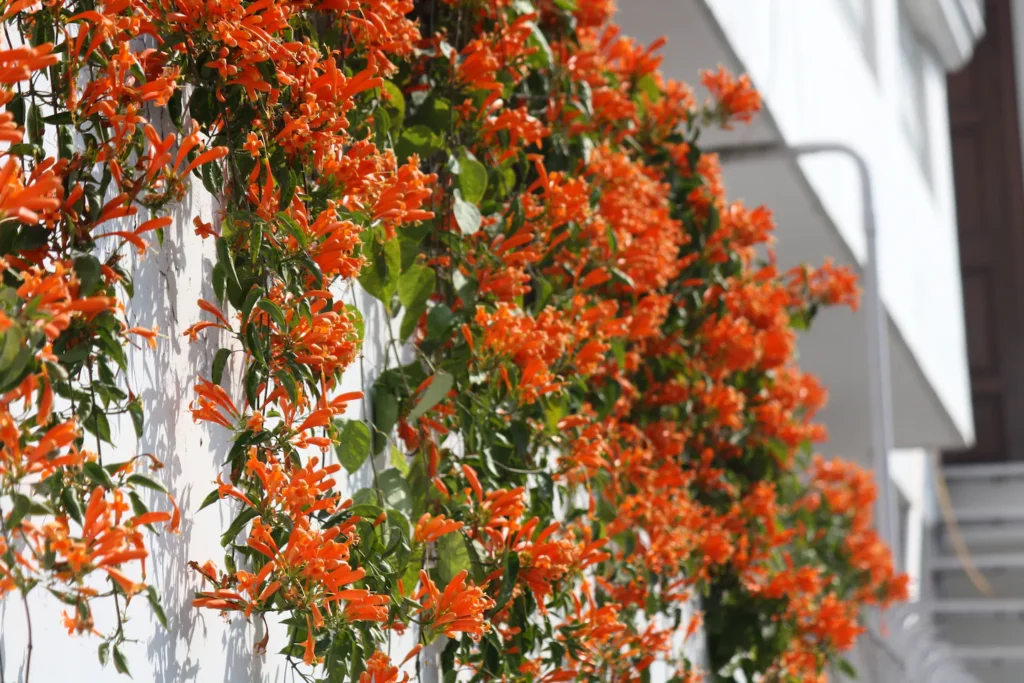
The first step in training vines is selecting a species that suits your climate, light conditions, and purpose.
a. Common Climbing Vines
- Clematis: Known for vibrant, large flowers; prefers sunny locations.
- Morning Glory: Fast-growing with colorful blooms; ideal for temporary coverage.
- Ivy (Hedera spp.): Evergreen; perfect for year-round privacy.
- Bougainvillea: Bright, thorny, and drought-tolerant; thrives in warm climates.
- Passionflower: Produces unique flowers and edible fruits; requires strong support.
- Jasmine: Fragrant flowers; great for balconies.
b. Factors to Consider
- Growth Rate: Fast-growing vines cover space quickly but may require more maintenance.
- Maintenance Needs: Some vines need regular pruning; others are low-maintenance.
- Sun and Shade Requirements: Ensure your chosen vine matches available sunlight.
- Support Strength: Heavy vines need strong trellises or fencing to avoid collapse.
Choosing the right vine ensures successful growth, aesthetic appeal, and minimal frustration.
2. Preparing Your Balcony or Fence
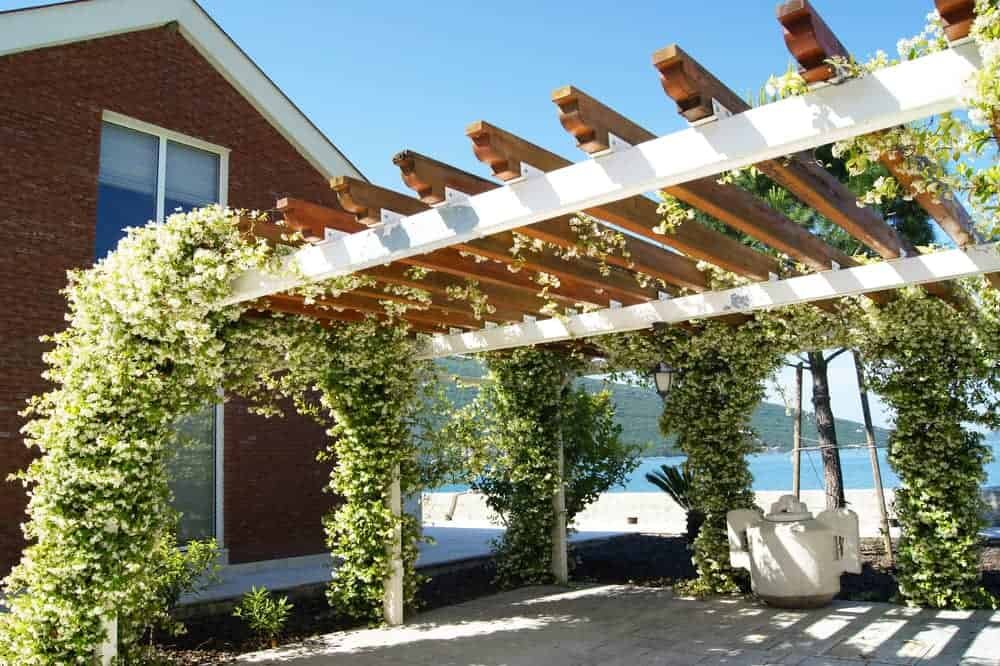
Proper preparation of the structure is crucial to support vine growth safely.
a. Assess Structural Strength
- Ensure your fence or balcony railing can support the weight of mature vines.
- For heavy climbers like wisteria or bougainvillea, reinforce fences or install trellises.
b. Install Support Systems
- Trellises: Provide vertical surfaces for vines to climb.
- Wire or String Guides: Lightweight vines can climb thin wires or nylon strings.
- Lattice Panels: Decorative and functional for privacy.
- Hooks and Rings: Useful for training vines along balcony railings.
Proper supports prevent damage to walls, fences, and railings, while giving vines a defined path to grow.
3. Planting Vines Correctly
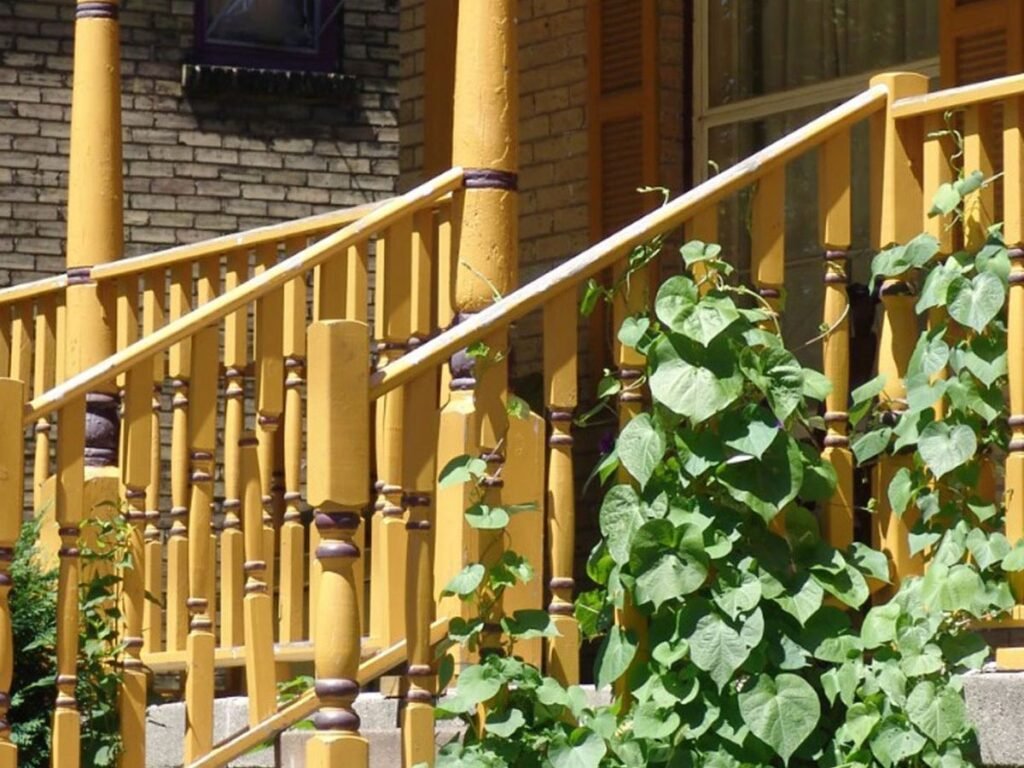
Planting location and technique influence growth and long-term success.
a. Positioning
- Plant vines close to the support to encourage upward growth.
- For balcony pots, place containers at the base of the trellis or railing.
b. Soil and Potting
- Use well-draining soil enriched with compost or organic matter.
- For potted vines, ensure containers have drainage holes to prevent root rot.
- Large vines benefit from deep pots or garden beds for root stability.
Correct planting gives vines a strong foundation and encourages rapid, healthy growth.
4. Training Vines to Climb
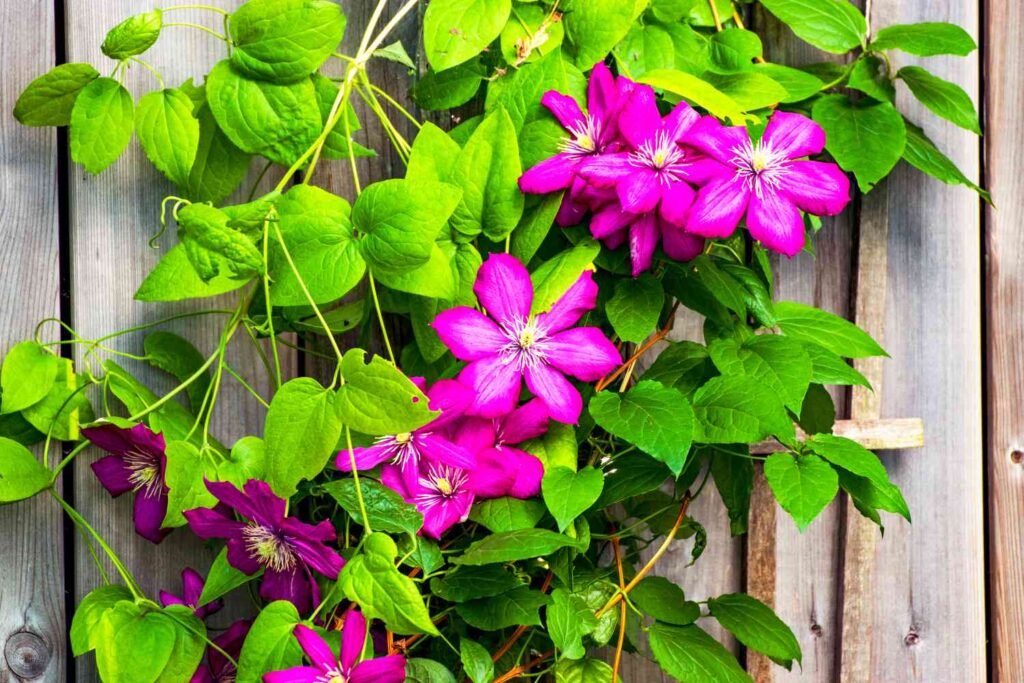
Vines need guidance to grow along your desired path:
a. Initial Guidance
- Use soft plant ties, twine, or clips to attach young vines to support.
- Tie loosely to avoid cutting into the stem as the vine grows.
- Encourage growth upward rather than outward by gently directing the tips toward the support.
b. Natural Climbing Mechanisms
- Twining Vines: Wrap naturally around supports (e.g., morning glory, honeysuckle).
- Tendrils: Grapevines and passionflowers use tendrils to latch onto structures.
- Adventitious Roots: Ivy and climbing hydrangea attach directly to walls or trellises.
Understanding a vine’s climbing style helps train it more effectively.
5. Pruning and Maintenance
Regular maintenance ensures vines stay healthy, attractive, and controlled.
a. Pruning Techniques
- Remove dead or damaged stems to improve airflow.
- Trim excessive growth to prevent tangling or overgrowth.
- For flowering vines, prune after blooming to encourage more flowers.
b. Seasonal Care
- Winter: Protect sensitive vines from frost.
- Summer: Monitor for pests and excessive growth.
- Fertilize during active growth to maintain vibrancy and flowering.
Proper pruning prevents vines from becoming unmanageable or damaging structures.
6. Watering and Nutrient Requirements
Vines need consistent care to thrive, especially in containers.
- Watering: Keep soil moist but not waterlogged. Water potted vines more frequently, especially in hot weather.
- Fertilization: Use a balanced fertilizer or slow-release granules. Flowering vines benefit from high-phosphorus fertilizers to encourage blooms.
- Mulching: Helps retain soil moisture and regulate temperature.
Healthy vines grow faster, stronger, and more vibrantly with proper nutrition and watering.
7. Encouraging Flowering and Fruiting
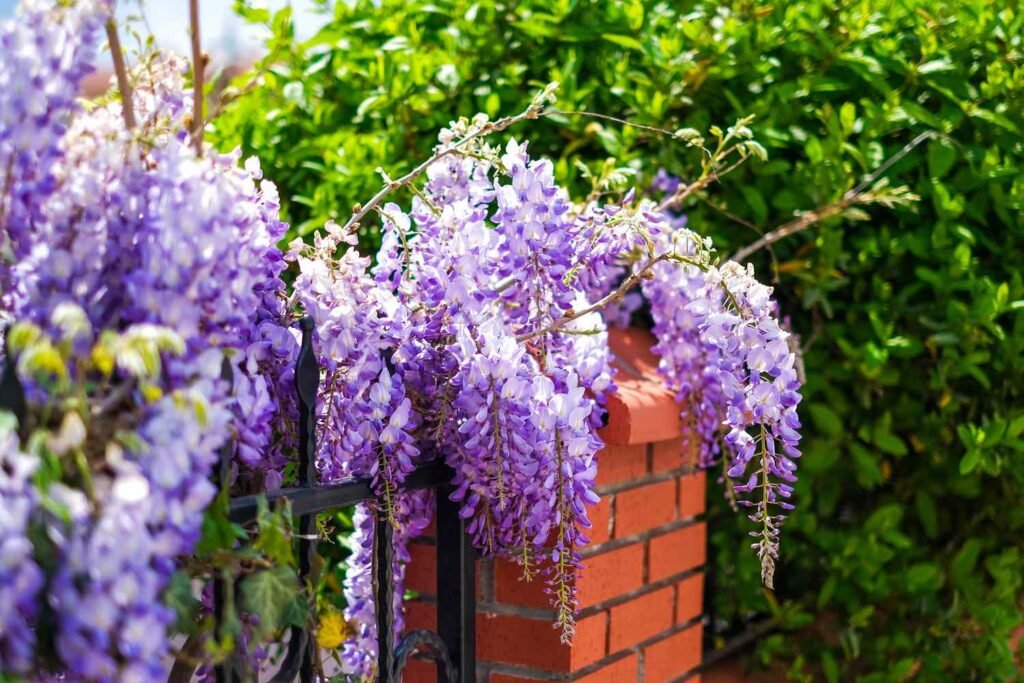
To maximize beauty and productivity:
- Sunlight: Most flowering vines need 6–8 hours of sun daily.
- Fertilizer: Apply bloom-boosting fertilizers with higher phosphorus content.
- Pollination: Some fruiting vines like passionflower or grapevines need pollinators or hand-pollination.
- Pruning: Remove old stems to promote new flowering shoots.
Following these practices ensures vines flower abundantly and produce fruit when applicable.
8. Preventing Common Problems
Climbing plants may face issues if not trained properly:
- Overgrowth: Regular pruning keeps vines tidy and prevents obstruction.
- Weak Support: Use sturdy trellises or wires to prevent collapse under heavy growth.
- Pests: Inspect regularly for aphids, spider mites, or caterpillars; treat with organic insecticides if needed.
- Disease: Ensure proper spacing and airflow to prevent mildew and fungal infections.
By proactively addressing these challenges, you maintain healthy, thriving vines on your balcony or fence.
9. Creative Ideas for Balcony and Fence Vines
Vines are versatile and can enhance aesthetics and functionality:
- Privacy Screens: Fast-growing vines like ivy or morning glory provide shade and block neighbors’ views.
- Decorative Walls: Bougainvillea, clematis, or wisteria create living artwork on fences.
- Container Gardens: Train vines in pots for small-space balconies or patios.
- Mixed Planting: Combine flowering and foliage vines for color, fragrance, and texture.
- Hanging Gardens: Drape vines from balcony railings for cascading greenery.
These creative applications make vines a beautiful and functional addition to any outdoor space.
10. Conclusion: Transform Your Space With Trained Vines
Training vines on a balcony or fence is rewarding, creative, and practical. By choosing the right vine, preparing sturdy supports, planting correctly, and providing consistent care, you can:
- Add vertical greenery and privacy to small spaces.
- Enhance aesthetic appeal with flowers and foliage.
- Encourage healthy growth and flowering through proper training and pruning.
- Enjoy a low-maintenance, sustainable, and visually striking garden even in urban environments.
With patience and consistent care, vines can transform ordinary balconies and fences into lush, living sanctuaries. Whether you’re growing for beauty, fragrance, or fruit, training vines is a fun and engaging project for gardeners of all skill levels.
